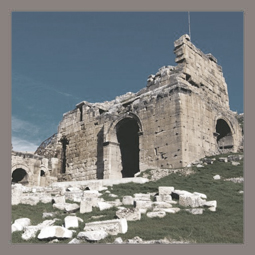Author: Fabio Fortinguerra
Download article as .pdf: Aspetti giuridici e amministrativi della gestione delle cave di marmo in età romana. Alcune ipotesi sul distretto estrattivo di Hierapolis di Frigia
 It’s very difficult to give a systematic reconstruction of the administrative management (ownership, administration, and labour condition) of mines and quarries of Roman times in the extraction districts of south-western Anatolia, because of the sources (the literary, archaeological, and epigraphical documentation) are too fragmentary and discontinuous. Indeed, there are no legislative or administrative documents indicating in detail the structure or body that was responsible for the management of the resources and workers. In the republican period, apart from the rare cases of publicly owned mines, most of the mines and quarries belonged to private owners or to municipal communities. Only in the Imperial period it is possible to see the exploitation of fully-fledged apparatus responsible for managing state-owned quarries. Partly as a consequence of the enormous demand for high-quality Asian marble, the 1st century saw the birth of a sophisticated system for the procurement and distribution of the marbles, where a key role was played by the statio marmorum, the office charged with managing the quarries. In most cases, the reconstruction of the organisation of the mining districts is based on indications drawn from the inscriptions on rock face or carved blocks, where it is possible to see the formula ex ratione, the names of the officina and the head of the workmen who performed the caesura, the number of the locus and the so-called brachium. Regarding the extraction district of Hierapolis in particular, reconstruction of the quarries’ administrative and managerial apparatus suggest that the marble quarries belonged mainly to private entrepreneurs or to the municipal community (or both) and served to meet local demand.
It’s very difficult to give a systematic reconstruction of the administrative management (ownership, administration, and labour condition) of mines and quarries of Roman times in the extraction districts of south-western Anatolia, because of the sources (the literary, archaeological, and epigraphical documentation) are too fragmentary and discontinuous. Indeed, there are no legislative or administrative documents indicating in detail the structure or body that was responsible for the management of the resources and workers. In the republican period, apart from the rare cases of publicly owned mines, most of the mines and quarries belonged to private owners or to municipal communities. Only in the Imperial period it is possible to see the exploitation of fully-fledged apparatus responsible for managing state-owned quarries. Partly as a consequence of the enormous demand for high-quality Asian marble, the 1st century saw the birth of a sophisticated system for the procurement and distribution of the marbles, where a key role was played by the statio marmorum, the office charged with managing the quarries. In most cases, the reconstruction of the organisation of the mining districts is based on indications drawn from the inscriptions on rock face or carved blocks, where it is possible to see the formula ex ratione, the names of the officina and the head of the workmen who performed the caesura, the number of the locus and the so-called brachium. Regarding the extraction district of Hierapolis in particular, reconstruction of the quarries’ administrative and managerial apparatus suggest that the marble quarries belonged mainly to private entrepreneurs or to the municipal community (or both) and served to meet local demand.
